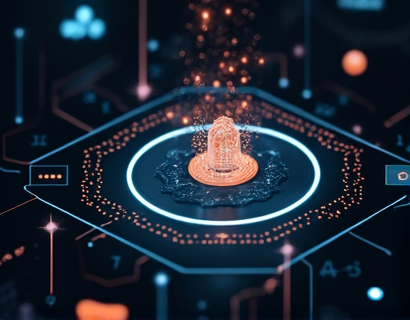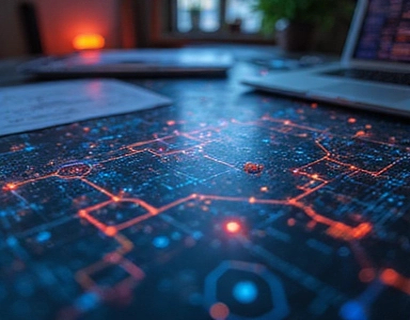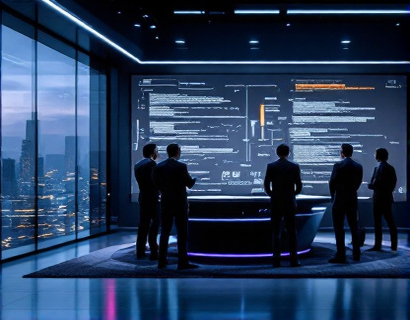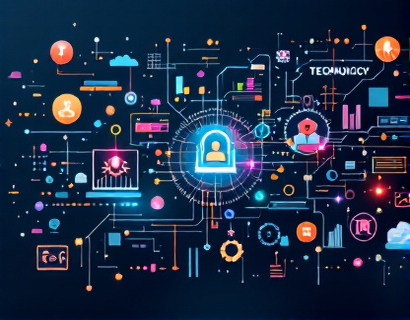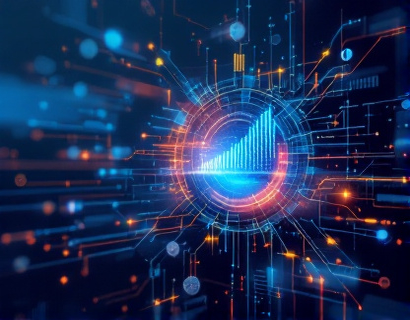Revolutionizing Astronomy Education: The Power of AI-Personalized Learning
The field of astronomy education is undergoing a transformative shift, thanks to the integration of artificial intelligence and personalized learning technologies. This innovative approach is redefining how students and enthusiasts explore the cosmos, making complex celestial concepts not only accessible but also engaging and interactive. By leveraging AI-driven platforms, learners can dive deep into the universe's mysteries, connect with a global community of like-minded individuals, and receive expert guidance to enhance their understanding and passion for astronomy.
Personalized Learning Paths
One of the most significant advantages of AI-powered personalized learning in astronomy is the ability to create tailored educational paths for each user. Traditional astronomy education often follows a one-size-fits-all curriculum, which can leave some students feeling overwhelmed or underchallenged. With AI, the learning experience is dynamically adjusted based on the individual's knowledge level, learning pace, and interests. This customization ensures that each learner receives the right amount of challenge and support, fostering a more effective and enjoyable learning process.
For instance, a beginner might start with foundational concepts such as the solar system and basic physics principles, while an advanced learner could delve into topics like exoplanet atmospheres or gravitational waves. The AI system continuously monitors progress and adapts the content in real-time, ensuring that the learner remains engaged and motivated. This personalized approach not only accelerates learning but also helps in building a strong and lasting interest in astronomy.
Interactive Exploration Tools
Interactivity is a cornerstone of AI-powered astronomy education. Traditional textbooks and lectures can only so much to bring the cosmos to life. AI-driven platforms offer interactive tools that allow learners to explore celestial bodies and phenomena in a hands-on manner. Virtual reality (VR) and augmented reality (AR) technologies, powered by AI, provide immersive experiences that simulate space travel, planetary surfaces, and cosmic events. These tools make abstract concepts more tangible and memorable, enhancing the overall learning experience.
For example, students can use VR to take a virtual tour of Mars, examining its terrain, climate, and potential for past or present life. AR applications can overlay astronomical data onto the real world, allowing learners to visualize the positions of stars and planets in their immediate environment. These interactive tools not only make learning more engaging but also help in developing a deeper intuitive understanding of complex astronomical concepts.
Expert Insights and Community Engagement
AI-powered platforms in astronomy education do more than just provide personalized content; they also connect learners with a wealth of expert knowledge and a supportive community. Renowned astronomers, researchers, and educators contribute to the platform, offering insights, answering questions, and sharing their latest research findings. This direct access to expert knowledge bridges the gap between professional science and amateur learning, enriching the educational experience.
Moreover, the platform fosters a vibrant community of astronomy enthusiasts. Learners can join discussion forums, participate in live Q&A sessions, and collaborate on projects with peers from around the world. This community aspect not only provides motivation and support but also exposes learners to diverse perspectives and ideas, fostering a more comprehensive understanding of astronomy. The sense of belonging to a global community of like-minded individuals can be incredibly inspiring and motivating.
Real-World Applications and Research Opportunities
AI-powered personalized learning in astronomy extends beyond theoretical knowledge; it also offers practical applications and research opportunities. Students can engage in citizen science projects, contributing to real-world astronomical research. These projects range from classifying exoplanet candidates to analyzing data from space telescopes. By participating in such initiatives, learners gain hands-on experience in scientific methods and contribute meaningfully to the advancement of astronomical knowledge.
Furthermore, the platform can facilitate connections with research institutions and observatories, providing opportunities for internships, mentorships, and collaborative projects. This integration of education and research not only enhances the learning experience but also prepares students for careers in astronomy and related fields.
Adaptive Learning Technologies
At the core of AI-powered personalized learning is the use of adaptive learning technologies. These technologies use algorithms to analyze user interactions and performance data, adjusting the content and difficulty level in real-time. This adaptive approach ensures that the learning experience is always optimized for the individual learner.
For example, if a student struggles with a particular concept, the system can provide additional resources, such as video tutorials, interactive simulations, or detailed explanations. Conversely, if a student demonstrates a strong grasp of a topic, the system can introduce more advanced materials to keep them challenged. This dynamic adjustment helps in maintaining a balance between ease and difficulty, promoting optimal learning outcomes.
Gamification and Motivation
Gamification is another powerful tool used in AI-powered astronomy education to enhance motivation and engagement. By incorporating game-like elements such as points, badges, and leaderboards, the platform makes learning astronomy more fun and rewarding. These elements tap into the natural human desire for achievement and competition, encouraging learners to set goals, track progress, and strive for excellence.
For instance, completing a series of astronomy modules might earn a learner a "Galactic Explorer" badge, while achieving high scores in quizzes could result in points that unlock special content or privileges. This gamified approach not only makes the learning process more enjoyable but also helps in building a sense of accomplishment and continuous improvement.
Accessibility and Inclusivity
AI-powered personalized learning in astronomy is designed to be accessible and inclusive, breaking down barriers that traditionally limit access to high-quality education. The platform can accommodate learners with different learning styles, abilities, and backgrounds. For example, visual learners can benefit from detailed diagrams and videos, while auditory learners can access audio explanations and podcasts. The system can also provide content in multiple languages and offer accommodations for learners with disabilities, ensuring that everyone has the opportunity to explore the wonders of the universe.
Moreover, the platform can reach learners in remote or underserved areas, providing them with access to world-class astronomical education that might otherwise be unavailable. This democratization of education helps in fostering a more diverse and inclusive community of astronomy enthusiasts.
Continuous Improvement and Innovation
The field of AI in education is rapidly evolving, and astronomy education is no exception. Continuous improvement and innovation are key to maintaining the effectiveness and relevance of AI-powered learning platforms. Developers and educators work closely to incorporate the latest advancements in AI, educational theory, and user feedback to enhance the platform's features and content.
For example, machine learning algorithms are constantly refined to better predict and adapt to learner needs. New interactive tools and resources are regularly added to keep the content fresh and engaging. This commitment to innovation ensures that the platform remains at the forefront of educational technology, providing learners with the most effective and exciting learning experience possible.
Conclusion
The integration of AI-powered personalized learning in astronomy education represents a significant leap forward in making the cosmos accessible and understandable to all. By offering tailored content, interactive exploration tools, expert insights, and a supportive community, these platforms transform the way we learn about the universe. As technology continues to advance, the potential for even more innovative and impactful educational experiences in astronomy is vast. Embracing this revolution in education not only enhances individual learning but also contributes to the broader advancement of astronomical knowledge and discovery.






